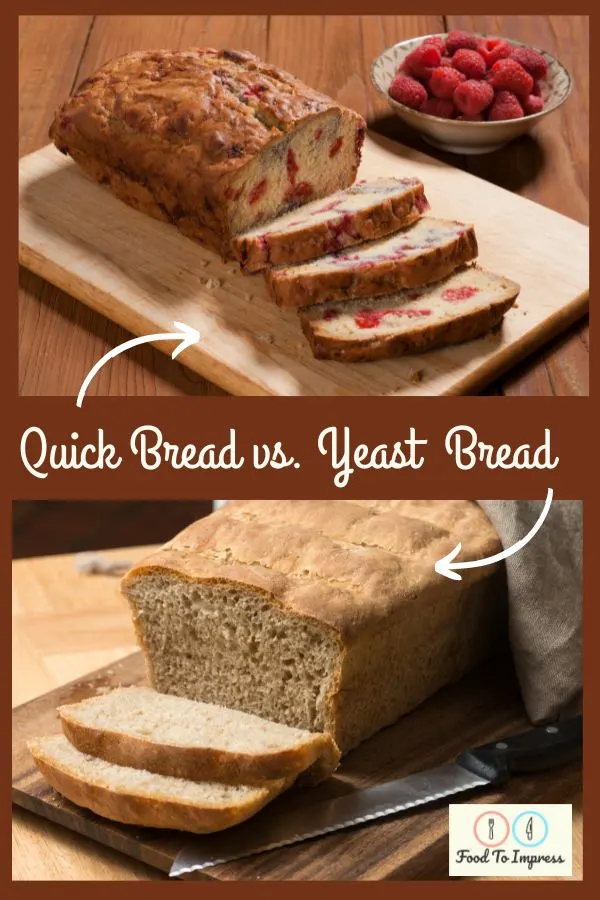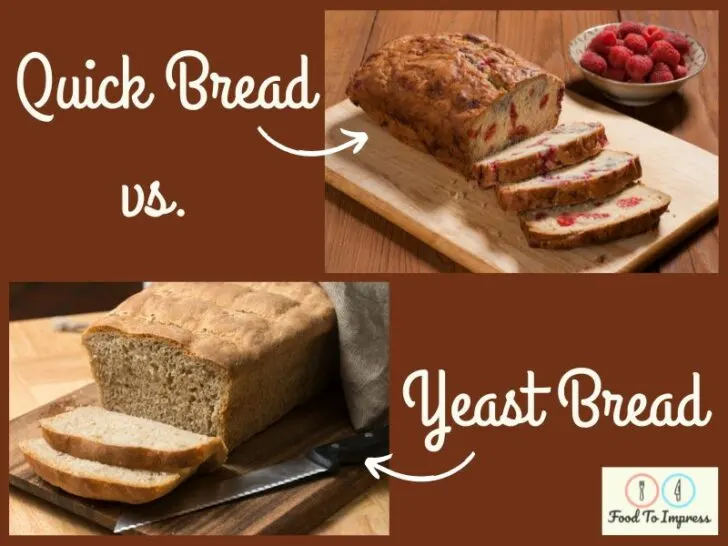When the delightful aroma of freshly baked bread wafts through your kitchen, it’s easy to forget the science and art that go into creating this everyday staple. The conversation around quick bread vs yeast bread has been a hot topic among home bakers. The differences lie not only in ingredients and preparation methods but also in their origins and uses. To get a better understanding of these two types of bread, let’s explore what sets them apart and how to choose the right loaf for your needs.
The Main Difference: Leavening Agents
The main difference between quick breads and yeasted breads lies in the type of leavening agent used to make the dough rise. Quick breads, such as banana bread, pumpkin bread, and Irish soda bread, use chemical leavening agents like baking powder and baking soda. These are the most common leaveners in the quick bread category.
On the other hand, yeast breads like sourdough bread, rye bread, and sandwich bread, rely on types of yeast, usually active dry yeast or instant yeast, as their primary leavening agent. Yeast is a natural leavening agent that creates carbon dioxide gas through fermentation. The yeast fermentation process requires warm liquid, often warm water, to activate the yeast. This is one of the key steps in creating the texture of the bread and allowing it to rise.

Quick Bread vs Yeast Bread: The Good News for Impatient Bakers
One of the advantages of quick breads is that they take less time to make than traditional yeast breads. The leavening agents in quick breads create a chemical reaction that helps the dough or batter rise rapidly, thus the name “quick bread”. The quick bread rise comes from the reaction between an acidic ingredient, like buttermilk or yogurt, and baking soda. This chemical approach makes it a favorite for those who do not have a lot of time to spend in the kitchen.
The basic ingredients of a quick bread batter are simple: dry ingredients (such as all-purpose flour, sugar, baking powder, and baking soda), wet ingredients (like eggs, non-dairy milk, or liquid fat such as vegetable oil), and flavorings (from chocolate chips to zucchini). The mixing methods can vary, with the muffin method (combining wet and dry ingredients separately, then combining them quickly) and the creaming method (beating sugar with solid fat) being the most common.
A wide range of dishes falls into the quick bread category. Besides loaf breads like banana and zucchini bread, pancakes, muffins, and even brownies are technically quick breads. Some easy quick bread recipes can be adapted to suit various dietary needs, using gluten-free flour blends, for instance. They can be baked in a loaf pan, mini loaf pans, or a muffin tin, and the finished product can be enjoyed as is, or used in other dishes like french toast. Another example is whole wheat bread or beer bread (check out this whole wheat beer recipe).
Yeast Bread: A Reward for the Patient Baker
While yeast breads might require more effort and time, the slow fermentation process results in a unique flavor and texture that many people find irresistible. The dough for yeast breads usually contains bread flour, yeast, water, and salt, but other ingredients like sugar or fats can be added for different types of bread, s
Yeast bread doughs are typically mixed using a dough hook on a stand mixer, though they can be kneaded by hand. The dough needs to be allowed to rise, often covered with a plastic wrap, at room temperature or in a warm environment. This process can take several hours, but it’s necessary for the yeast to ferment the dough, produce gas, and create the bread’s structure. If your bread isn’t rising as expected, this article can you bake dough that hasn’t risen? might help.
One can experiment with different types of yeast for varied results. For example, sourdough bread is made with a sourdough starter, a type of natural yeast culture that imparts a distinct tangy flavor to the bread.
Whether you’re in a rush and want to make a loaf of quick bread, or you have time to spare and want to try your hand at homemade yeast bread, there’s a type of bread suitable for every occasion. From grocery store staples to true recipes that have been passed down for generations, the diversity in bread making ensures that there’s always something new to try.
More Info about Quick Bread vs Yeast Bread
For more in-depth exploration of bread making, refer to these articles on bread dough vs pizza dough, and why is my bread yeasty. Happy baking!

